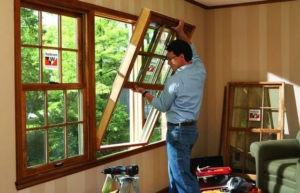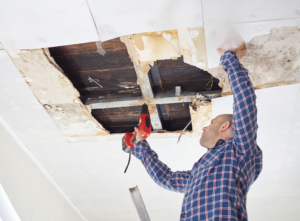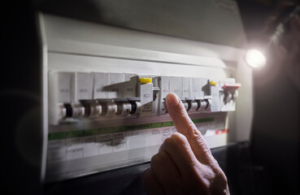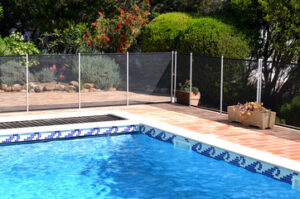General Contractors Richmond VA are the people who turn the construction visions of architects, engineers, and interior designers into reality. They are also responsible for overseeing day-to-day construction activities and managing a budget.
They also manage the payment chain, which moves money down through various tiers of contractors and suppliers. This can cause problems if there is poor communication and visibility.

Managing construction projects requires a wide range of skills. GCs need to have attention to detail, the ability to manage multiple teams and subcontractors, and excellent leadership abilities. They also need to have good communication with all project stakeholders. In addition, they need to be able to predict possible problems and create contingency plans. A general contractor with these skills can save time and money by avoiding delays, improving productivity, and reducing stress levels.
GCs oversee the entire construction process and ensure that work is performed as per the design requirements. They are also responsible for ensuring the safety of workers, equipment, and materials. They also collaborate with the architects and review plans for compliance with building codes and regulations.
Experienced GCs have an in-depth understanding of the construction industry and have a wealth of experience. They also understand the best ways to complete a project on budget and within deadlines. They can offer suggestions for minimizing cost and time, and they can help you select the right materials for your home improvement project. They also have a deep knowledge of local building codes and can help you navigate the complex web of regulations.
Whether you are planning a new construction or renovating your current home, a general contractor is the key to making your vision a reality. A seasoned GC has a full team of specialists who can morph your ideas into a reality. They can even manage the entire construction process so that you can enjoy your new home or office as soon as possible.
A reputable GC will have an impressive portfolio of work and client testimonials. Look for a website that showcases their work and offers a contact form to submit questions. You should also make sure that they maintain a license in your area. In most cases, this involves submitting identifying information, providing proof of insurance, and paying a fee. It is also important to know that some states require continuing education for licensing.
They hire subcontractors
A general contractor oversees the construction of new buildings and renovations. They work closely with the client to bring their vision to life. They are experienced in negotiating with subcontractors and suppliers and will make sure that the project is completed on time. Moreover, they will ensure that the construction is done according to local codes and regulations. This ensures that the building will pass a future home inspection.
In addition to their construction expertise, a good general contractor will have a team of financial management professionals to handle accounting, bookkeeping, and overall financial management. This will ensure that the project stays within its budget, avoiding overruns and additional costs. They will also make sure that there is a smooth communication channel among all project units to avoid any glitches during the construction process.
Large construction projects require a huge amount of materials. To ensure the availability of these materials, GCs will hire a team of supply chain management professionals to coordinate the movement of materials from vendors to the project site. They will also manage the intricacies of vendor sourcing, estimates, capacities, quality work, turnaround times, and invoice processing.
When a GC is awarded a contract for a construction project, they will review the drawings and scope of work, then seek quotes from specialized subcontractors. The GC will add their own overhead to each quote and submit it to the owner or architect. They will be obligated to deliver the complete scope of work for that price.
The GC will also check the prospective subcontractor’s credentials. This may include requesting references and asking for proof of insurance. In addition, they will want to see the company’s capital and debt-to-inequity ratio, and accounts receivable and payable. This will help them determine whether the company is legitimate and will be able to perform the work. It’s also important for GCs to be upfront with potential subcontractors about their retention policy, which typically includes keeping 10% of a subcontractor’s pay until the job is completed or a year afterward. In some cases, the GC will hold on to this money as security in case there are any unforeseen problems post-construction.
They manage the budget
Managing the budget is an essential part of construction projects. GCs are responsible for creating a detailed project plan and establishing deadlines that will keep the process on track. They also provide cost estimates, which help prevent project overruns. They also ensure that subcontractors are paid on time by securing lien waivers.
During the planning phase, the general contractor works closely with the architect to ensure that the work will be carried out as per the design requirements. Then, they review the completed project and provide a final report to the owner. In addition, they oversee all the construction activities and make sure that the work is in compliance with the contract. They also inspect the work to ensure that all materials and equipment are in good condition.
Another important task of the GC is to manage the procurement of raw materials and building components. They review and analyze the drawings, scope of work, and requirements and obtain quotes from a number of qualified specialized contractors. They then add their own overhead costs and submit a quote to the client.
Large projects require an extensive communication infrastructure to keep all parties involved informed of changes and progress. GCs establish an effective communication system and handle change orders, which are documented and approved by all parties. They also assess the impact of change orders on the cost and schedule.
A reputable general contractor will have a network of reliable and trustworthy suppliers that they have worked with for years. This allows them to get the best rates for materials and pass those savings on to their clients. For example, they might have relationships with steel manufacturers in Australia that can provide them with the high-quality stainless steel they need for their projects.
Hiring a general contractor is an investment, but it can save you a lot of money in the long run. They have the experience and knowledge to make your project a success, saving you from expensive mistakes that can be costly to fix later on. They can also take the hassle out of your construction project, providing you with peace of mind and saving you valuable time.
They manage the schedule
A general contractor is responsible for managing the overall construction process of a project. This involves coordinating and scheduling tasks for the various subcontractors and creating deadlines that everyone will be able to meet. It also includes ensuring that all work meets the specifications set by the architect and blueprints. The GC works closely with the architects and is responsible for addressing any changes or problems as they arise. They also make sure that all materials are ordered correctly so that delays don’t occur due to incorrect orders or miscommunications among contractors. In addition, they may also be required to perform some of the work themselves, such as pouring concrete or drywall installation.
A seasoned general contractor will have built relationships with suppliers and subcontractors over time. This means that they’ll have a solid network and can get better pricing for labor and supplies. These savings can help you stay within your budget and reduce the stress of trying to find a reliable team on your own.
Managing the schedule for a large commercial construction project can be a challenge. This is because there are several human elements that can interfere with the implementation of project plans. However, a GC can help to prevent these delays by dividing the project into manageable segments and assigning deadlines for each one. This will prevent cost overruns and improve the quality of work by keeping everything on track.
Another important task of a GC is to manage the human resources of each team member. This is important to ensure that the work is completed on time and that all team members are working together effectively. This requires excellent interpersonal skills, which a GC must have to avoid conflicts and make all parties feel comfortable with each other.
In addition to their management and planning skills, a good general contractor is also highly organized. They must be able to keep up with the latest market changes and alert the team when it is necessary to change the original plan. They must also have a good relationship with building inspectors to prevent major changes that can cause costly delays.








